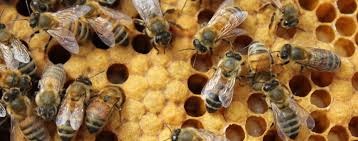
Agricultural News
CropLife America Supports Pollinator Stewardship During Spring Planting
Fri, 27 Mar 2015 13:07:29 CDT
 CropLife America (CLA) supports sound stewardship practices for promoting pollinator health as growers prepare for the 2015 planting season. Stewardship in seed treatment and crop protection helps growers ensure that they can produce abundant high-quality food in an environmentally sustainable way. For instance, growers can minimize the risk of exposure of seed treatments to pollinators by following label directions for all components of the treated products, as detailed in The Guide to Seed Treatment Stewardship, jointly produced by the American Seed Trade Association and CLA along with a host of grower organizations.
CropLife America (CLA) supports sound stewardship practices for promoting pollinator health as growers prepare for the 2015 planting season. Stewardship in seed treatment and crop protection helps growers ensure that they can produce abundant high-quality food in an environmentally sustainable way. For instance, growers can minimize the risk of exposure of seed treatments to pollinators by following label directions for all components of the treated products, as detailed in The Guide to Seed Treatment Stewardship, jointly produced by the American Seed Trade Association and CLA along with a host of grower organizations.
"Spring planting is an essential time to use the best available tools and practices to promote crop growth," stated Jay Vroom, president and CEO of CLA. "The crop protection industry looks forward to continuing to work with growers, beekeepers, regulators and other stakeholders to help ensure that we all play a part in supporting bee health through stewardship and other efforts. When crop protection products are applied according to label directions, bee colonies should not experience any unreasonable adverse effects."
A recent study from the University of Maryland examining the effects of the insecticide imidacloprid on honey bee colony health found that the product "does not significantly harm honey bee colonies at real-world dosage levels." In fact, seed treatment products, applied to nearly every acre of corn planted in the U.S. in 2011, helped support nearly $80 billion worth of crop value to American farmers.1
U.S. Department of Agriculture (USDA) data indicates that honey production from producers with five or more honey bee colonies increased 19 percent from 2013 to 2014, for a total production of 178 million pounds. The number of colonies producing honey also increased 4 percent to 2.74 million across the nation.2 Yield per colony rose 15 percent from 2013 to 2014, increasing from 56.6 pounds to an average of 65.1 pounds. Producer honey stocks increased 8 percent to 41.2 million pounds on December 15, 2014. The report, released March 20 by the National Agricultural Statistics Service, Agricultural Statistics Board, poses one positive indicator of bee health. At the same time, longer term data reveals that 2014 honey production in the US is well below record levels over two decades ago and imports of honey have surged in recent years so, there is much more work to be done.
"We are optimistic with the recent reports on honey production," stated Vroom. "The honey data follows last year's overwintering report, which found losses of 23.2 percent of managed honey bee colonies in the U.S. in the 2013/2014 winter compared to 30.5 percent reported for the 2012/2013 winter. Of course, beekeepers also have to contend with colony impacts at other times of the year which have been significant. The crop protection industry looks forward to continued collaboration in furthering these positive indicators. Everyone shares in the obligation to take care in the use of pesticides, to help manage bee diseases and parasites, and to expand bee forage so that these and other important bee health indicators all can keep trending higher."
CLA supports the public television series America's Heartland in hosting an online educational resource that highlights the connection between pollinators and agriculture. Additionally, the association is a member of the Honey Bee Health Coalition, a diverse, multi-stakeholder group focused on improving the health of honey bees and other pollinators, and also strongly supports the North American Pollinator Protection Campaign (NAPPC). Read more about pollinator health and the crop protection industry on CLA's website.
WebReadyTM Powered by WireReady® NSI
Top Agricultural News
More Headlines...



















